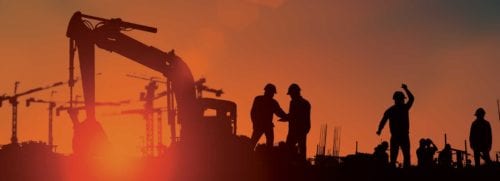
Stimulus, Clean Energy, and Changing the Status Quo
The status quo no longer works—for health, for equity, or for climate. In just three months, we lost over 100,000 Americans to COVID-19. Over 40 million Americans have lost their jobs, putting the US unemployment rate at levels not seen since World War II.
We must forge a positive direction through long-term solutions, especially for those disproportionately affected by COVID-19 and the systemic challenges it is exposing.
There are answers. For one, a clean energy future offers reduced air pollution, new jobs, and economic growth, but how do we get there? We at Rocky Mountain Institute (RMI) and our colleagues around the world have been faced with the question of how we can work with national governments to build back better.
In answer, we lay out four global priorities: create jobs and grow the economy; support public health and reduce air pollution; enhance economic, energy, and climate resilience; and decarbonize. Social equity is embedded in each of these priorities.
We apply these ideas in our US Stimulus Strategy, which outlines ways to jumpstart the US economy, address equity, and advance a low- or zero-carbon future all at the same time, and use creative financing tools to do it. Here are Rocky Mountain Institute’s top four ideas for the next US stimulus:
Build Back Better Buildings
Building retrofits have never been completed at the scale needed to be truly transformative, and federal retrofit programs have not yet included a focus on electrification. And the potential is enormous: a comprehensive national building retrofit program can mobilize a ten-fold increase in retrofits, improve 50 million American lives, and create 1.9 to 2.8 million jobs.
Efficient buildings with all-electric heating and air conditioning equipment and appliances put money back into consumer pockets, create new jobs, and improve equity and health outcomes for communities. Retrofits are one of best ways to provide jobs today, while leading to cost savings across the country.
To support the ramp-up, we can scale construction breakthroughs, like using prefabricated walls with embedded insulation to replace aging walls. We can expand access to capital to support such investments, especially in underserved market segments. And we can provide training to support the next generation of skilled workers.
Transform our Communities and Electrify Mobility
The transportation sector is our biggest source of greenhouse gas emissions, yet our country has barely begun to address it. Efforts have consisted of limited, piecemeal solutions that insufficiently tackle the way in which transportation impacts health, equity, and the climate.
Auto-centric practices directly affect lower-income communities as the cost of transportation is a serious burden. Our plan proposes measures to rebuild multiple modes of transportation including mass transit, bicycle and pedestrian infrastructure, and help transform communities to become healthier and connected.
With equal fervor, we must support the growth of the electric vehicle market. Though prices continue to decline, electric vehicles remain out of reach for many car buyers and commercial fleet operators. RMI recommends accelerating cost reductions by supporting automakers and battery manufacturers to scale production.
And to improve the ease of charging electric vehicles, the federal government should support a nationwide expansion of charging infrastructure. Industry experts estimate a $20B investment in these systems will produce up to 300,000 jobs.
Debt Forgiveness for a Sustainable Recovery
To unlock a better future, we need to get creative about financing. Debt forgiveness can help industries in economic pain now. For existing and future federal loans, the government could forgive debt based on verifiable emissions reductions. Instead of paying back the loans, industry could invest in reduced emissions, cost savings, and public health. This simple yet elegant approach could be built from existing programs and even applied retroactively to stimulus funds already issued.
Economic Recovery Facility for Financing Low- and Zero-Carbon Activities
Whether it is building retrofits or EV charging stations, some clean energy projects require financing that is different from typical approaches. For example, adding up a many small efficiency projects can create an investment opportunity.
A new federal Economic Recovery Facility could provide the financial tools to crowd in private investment to multiply public dollars for clean projects across the country. It would create a federal “bank” focused on clean projects with unique financing needs.
Assuming the facility is capitalized at $5 billion, RMI estimates that the Economic Recovery Facility would create 388,000 clean jobs in the first eight years and reduce energy costs for nearly 800,000 homes and businesses during the same period, per the impacts of the Connecticut Green Bank.
Traditional approaches to stimulating the economy and funding advanced technologies are insufficient when considering the challenge ahead. We need bold solutions that go beyond the steps we have taken in the past. We believe our approach provides a holistic view to transform our buildings and transportation, along with unique funding mechanisms for many different kinds of clean energy projects.
More detail and a full set of authors behind these ideas are available in our paper.